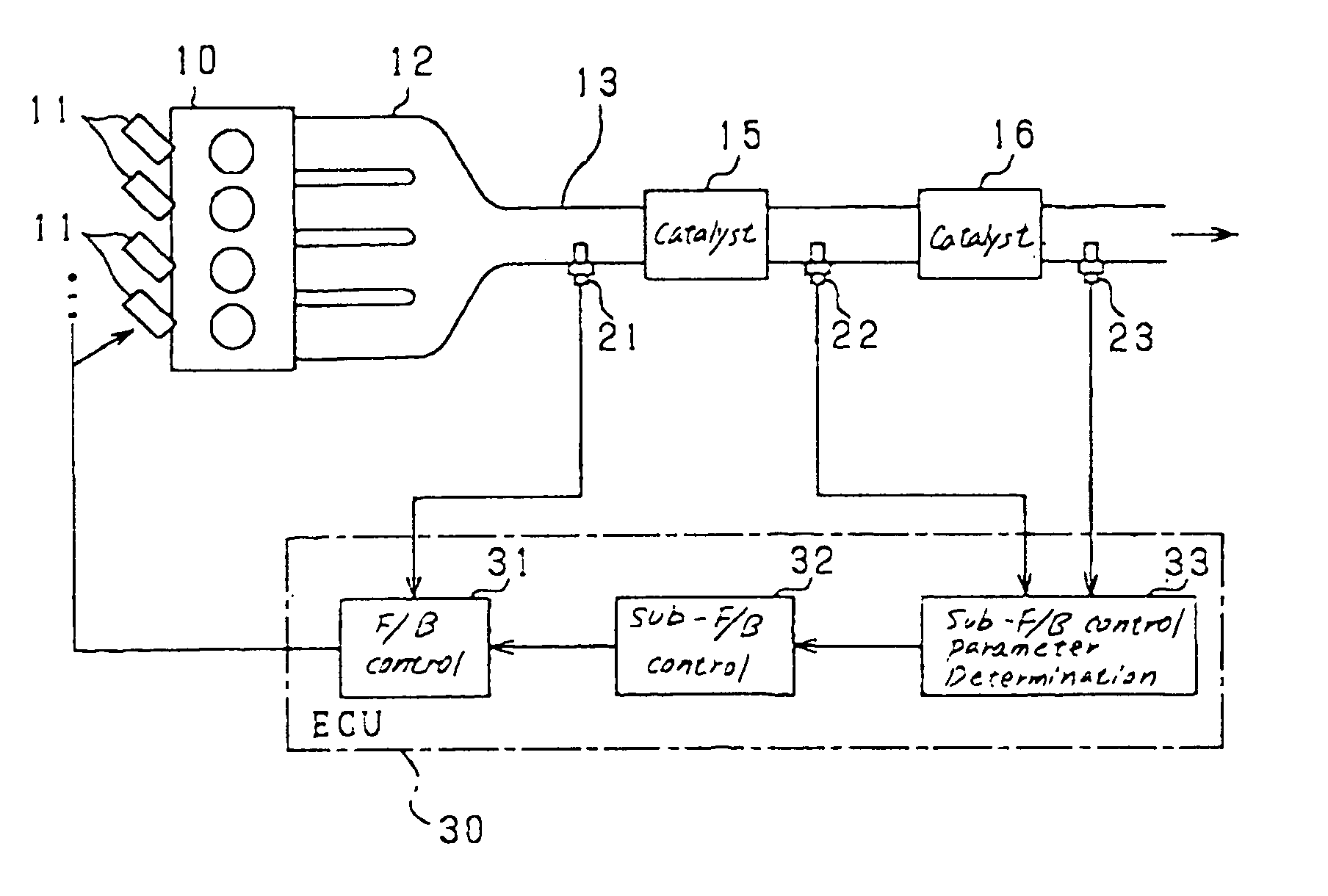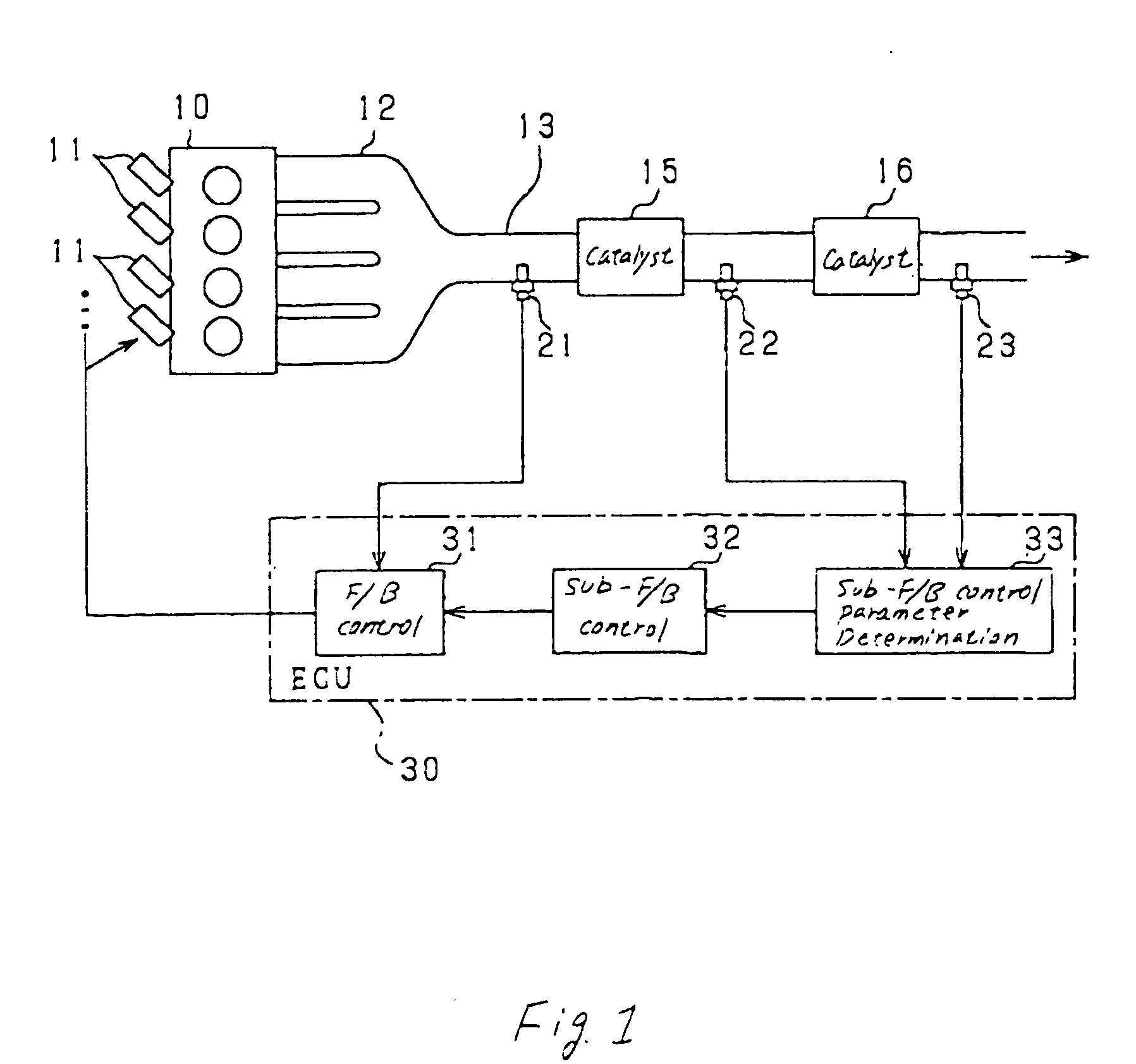Air/fuel ratio control system for automotive vehicle using feedback control
a technology of air/fuel ratio and feedback control, which is applied in the direction of electrical control, machine/engine, exhaust treatment electric control, etc., can solve the problems of deterioration of emissions, lack of control response rate, and complexity of system structure, so as to reduce the harmful emission reduction efficiency and reduce the weighting factor. , the effect of reducing the weighting factor
- Summary
- Abstract
- Description
- Claims
- Application Information
AI Technical Summary
Benefits of technology
Problems solved by technology
Method used
Image
Examples
Embodiment Construction
[0026] Referring to the drawings, particularly to FIG. 1, there is shown an engine control system for internal combustion engines according to the invention.
[0027] The engine control system, as illustrated, is designed for a four-cylinder gasoline engine 10 (i.e., a multi-cylinder internal combustion engine) and works to perform an air-fuel ratio control function, as will be discussed later in detail. The engine control system includes an engine electronic control unit 30 (will also be referred to as engine ECU below) which works to control the quantity of fuel to be injected into the engine 10 and the ignition timing of the fuel.
[0028] The engine 10 has solenoid-operated fuel injectors 11 (also called electromagnetic injectors) one for each cylinder. The fuel injectors 11 are installed near intake ports of the engine 10. When the fuel is injected from each of the fuel injectors 11 into a corresponding one of combustion chambers of the engine 10, it creates a mixture of sucked air...
PUM
 Login to View More
Login to View More Abstract
Description
Claims
Application Information
 Login to View More
Login to View More - R&D
- Intellectual Property
- Life Sciences
- Materials
- Tech Scout
- Unparalleled Data Quality
- Higher Quality Content
- 60% Fewer Hallucinations
Browse by: Latest US Patents, China's latest patents, Technical Efficacy Thesaurus, Application Domain, Technology Topic, Popular Technical Reports.
© 2025 PatSnap. All rights reserved.Legal|Privacy policy|Modern Slavery Act Transparency Statement|Sitemap|About US| Contact US: help@patsnap.com



